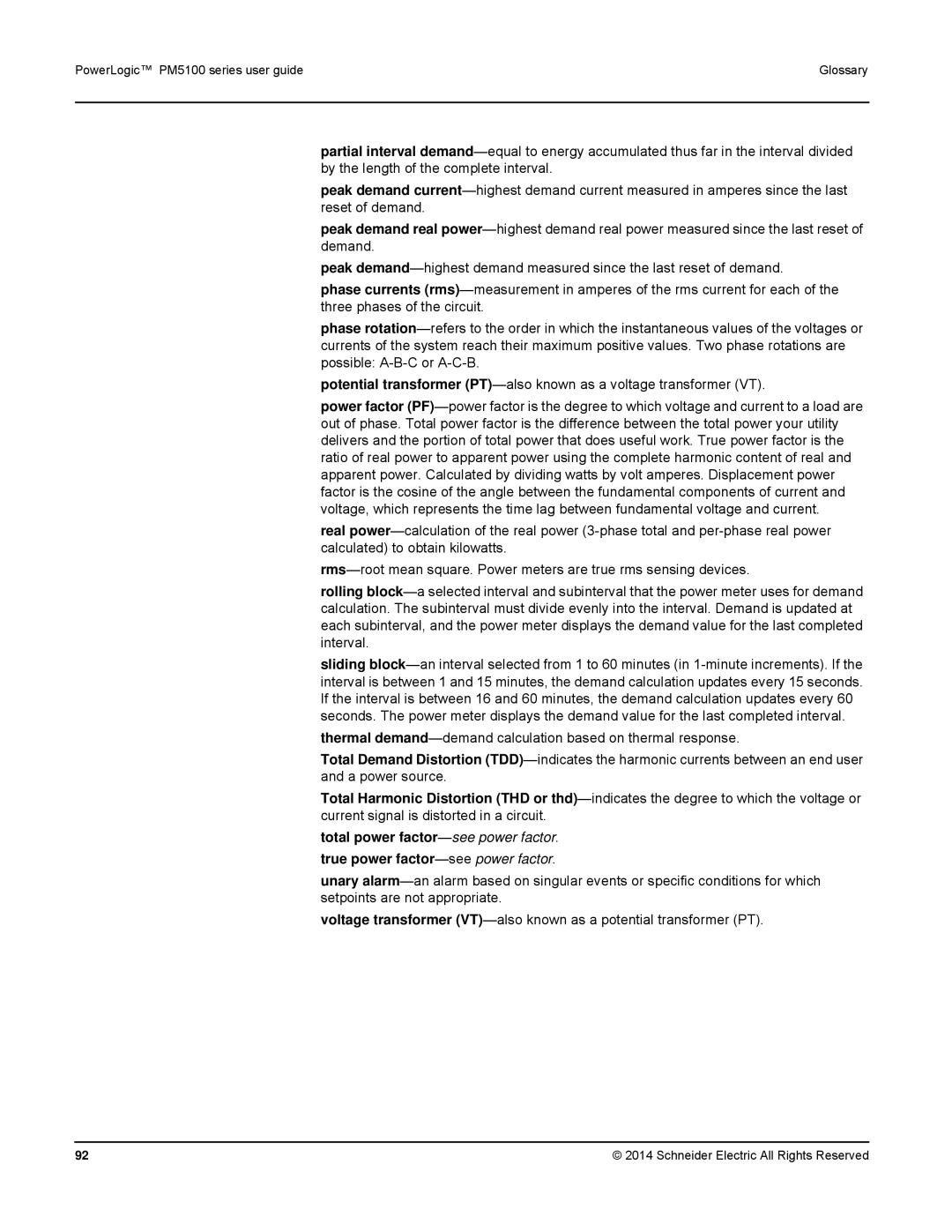PowerLogic™ PM5100 series user guide | Glossary |
| |
partial interval demand—equal to energy accumulated thus far in the interval divided by the length of the complete interval.
peak demand current—highest demand current measured in amperes since the last reset of demand.
peak demand real power—highest demand real power measured since the last reset of demand.
peak demand—highest demand measured since the last reset of demand.
phase currents (rms)—measurement in amperes of the rms current for each of the three phases of the circuit.
phase rotation—refers to the order in which the instantaneous values of the voltages or currents of the system reach their maximum positive values. Two phase rotations are possible: A-B-C or A-C-B.
potential transformer (PT)—also known as a voltage transformer (VT).
power factor (PF)—power factor is the degree to which voltage and current to a load are out of phase. Total power factor is the difference between the total power your utility delivers and the portion of total power that does useful work. True power factor is the ratio of real power to apparent power using the complete harmonic content of real and apparent power. Calculated by dividing watts by volt amperes. Displacement power factor is the cosine of the angle between the fundamental components of current and voltage, which represents the time lag between fundamental voltage and current.
real power—calculation of the real power (3-phase total and per-phase real power calculated) to obtain kilowatts.
rms—root mean square. Power meters are true rms sensing devices.
rolling block—a selected interval and subinterval that the power meter uses for demand calculation. The subinterval must divide evenly into the interval. Demand is updated at each subinterval, and the power meter displays the demand value for the last completed interval.
sliding block—an interval selected from 1 to 60 minutes (in 1-minute increments). If the interval is between 1 and 15 minutes, the demand calculation updates every 15 seconds. If the interval is between 16 and 60 minutes, the demand calculation updates every 60 seconds. The power meter displays the demand value for the last completed interval.
thermal demand—demand calculation based on thermal response.
Total Demand Distortion (TDD)—indicates the harmonic currents between an end user and a power source.
Total Harmonic Distortion (THD or thd)—indicates the degree to which the voltage or current signal is distorted in a circuit.
total power factor—see power factor. true power factor—seepower factor.
unary alarm—an alarm based on singular events or specific conditions for which setpoints are not appropriate.
voltage transformer (VT)—also known as a potential transformer (PT).
